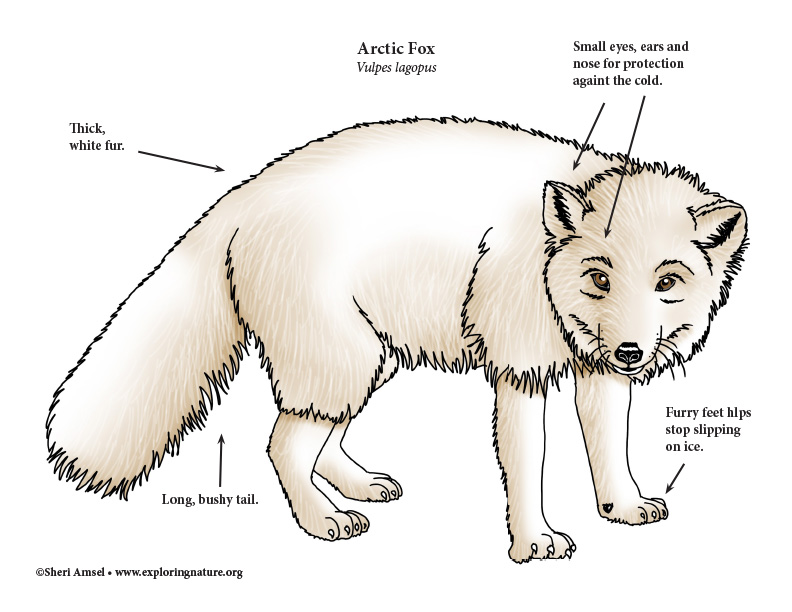

They are found in Alaska, northern Canada, the Northwest Territories. It is also found in the arctic regions of Europe, Asia, Iceland and Greenland.
They live out on the ice pack all winter where their white fur blends in. In the summer, they live out on the tundra (where their gray coats blend in).
They are 3 feet long and weigh up to 15 pounds (usually less). Males are larger. They have thick fur and a long, bushy tail that they use to wrap around their body at night for warmth. Even their feet are furry which helps keep them form slipping on the ice. They have small eyes, ears and nose for protection against the cold. They have short legs that keep them close to the ground.
They travel all over their range searching for food. After kits are born, they live in family groups of parents, young and often an extra female (older daughter from the last litter) who will help care for the young.
They are hunters and scavengers and will eat anything they can find. They eat rodents (especially lemmings), birds, insects, eggs, berries and dead animals (carrion).
They can be eaten by polar bears or arctic wolves.
Females are pregnant for 7.5 weeks (gestation). She has 6-12 kits in a den where both parents care for the young. The male guards the den and brings food to mother and kits.
They may only live 3 years in the wild, but up to 15 in captivity. They are not threatened.
Kingdom: Animalia
Phylum: Chordata
Subphylum: Vertebrata
Class: Mammalia
Order: Carnivora
Suborder: Caniformia
Family: Canidae
Genus: Vulpes
Species: Vulpes lagopus
When you research information you must cite the reference. Citing for websites is different from citing from books, magazines and periodicals. The style of citing shown here is from the MLA Style Citations (Modern Language Association).
When citing a WEBSITE the general format is as follows.
Author Last Name, First Name(s). "Title: Subtitle of Part of Web Page, if appropriate." Title: Subtitle: Section of Page if appropriate. Sponsoring/Publishing Agency, If Given. Additional significant descriptive information. Date of Electronic Publication or other Date, such as Last Updated. Day Month Year of access < URL >.
Amsel, Sheri. "Fox (Arctic)" Exploring Nature Educational Resource ©2005-2024. December 13, 2024
< http://www.exploringnature.org/db/view/Fox-Arctic >

